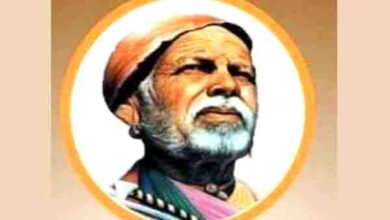डिजिटल शासन के नए युग में परास्त होते गरीब dijital shaasan ke nae yug mein paraast hote gareeb

©प्रियंका सौरभ
परिचय– हिसार, हरियाणा.
डिजिटल डिवाइड आबादी के अमीर-गरीब, पुरुष-महिला, शहरी-ग्रामीण आदि क्षेत्रों में बनता है। इस अंतर को कम करने की जरूरत है, तभी ई-गवर्नेंस के लाभों का समान रूप से उपयोग किया जा सकेगा। ग्रामीण क्षेत्रों में ई-गवर्नेंस की पहल जमीनी हकीकत की पहचान और विश्लेषण करके की जानी चाहिए। प्लेटफॉर्म और ऐप-आधारित समाधान गरीबों को पूरी तरह से सेवाओं से वंचित कर सकते हैं या आगे स्वास्थ्य सेवाओं तक उनकी पहुँच को कम कर सकते हैं। जैसे स्लॉट बुक करना फोन, कंप्यूटर और इंटरनेट के बिना उन लोगों के लिये बहुत कठिन हों सकता है।
सम्मान के साथ जीने का अधिकार एक संवैधानिक अनिवार्यता है। हालाँकि, यह आज शासन में डिजिटल पहल की चर्चाओं में शायद ही कभी प्रकट होता है। केंद्रीकृत डेटा डैशबोर्ड नीतियों का आकलन करने, मानवीय गरिमा और अधिकारों तक पहुँचने में जितनी मदद करती है; उतने ही अक्सर तकनीकी खामियां किसी को अधिकारों तक पहुंचने से रोकती भी हैं।
चिंता की बात यह है कि इंटरनेट और अन्य सूचना और संचार प्रौद्योगिकियों तक पहुंच के बिना गरीब लोगों को नुकसान हो रहा है, क्योंकि वे डिजिटल जानकारी प्राप्त करने, ऑनलाइन खरीदारी करने , लोकतांत्रिक तरीके से भाग लेने, या कौशल सीखने और कौशल प्रदान करने में असमर्थ या कम सक्षम हैं।
मौजूदा डिजिटल प्रौद्योगिकी की बढ़ती पैठ किसी देश की अधिक सामाजिक प्रगति से जुड़ी है। लेकिन निश्चित समय में बिना ज्ञान या इंटरनेट तक पहुंच के लोग प्रगति के चक्र में पीछे छूट जाएंगे। ये सच है कि इंटरनेट कनेक्टिविटी और आईसीटी उसकी भविष्य की सामाजिक और सांस्कृतिक पूंजी को बढ़ा मगर इससे उन लोगों के बीच आर्थिक असमानता पैदा होती है जो प्रौद्योगिकी का खर्च उठा सकते हैं और जो नहीं उठा सकते।
प्लेटफॉर्म और ऐप-आधारित समाधान गरीबों को पूरी तरह से सेवाओं से वंचित कर सकते हैं या आगे स्वास्थ्य सेवाओं तक उनकी पहुँच को कम कर सकते हैं। जैसे स्लॉट बुक करना फोन, कंप्यूटर और इंटरनेट के बिना उन लोगों के लिये बहुत कठिन हों सकता है।
तकनीकी प्रगति तक पहुंच और अर्थव्यवस्था को मजबूत करने में इसकी समग्र सफलता के बीच सीधा संबंध है। कम डिजिटल गैप वाले देश अधिक डिजिटल गैप वाले देशों की तुलना में अधिक लाभान्वित होते हैं। डिजिटल डिवाइड कम आय वाले बच्चों की सीखने और बढ़ने की क्षमता को भी प्रभावित करता है।
इंटरनेट एक्सेस के बिना, छात्र आज की गतिशील अर्थव्यवस्था को समझने के लिए आवश्यक तकनीकी कौशल विकसित करने में असमर्थ हैं. लगभग ६५% युवा विद्वान घर पर इंटरनेट का उपयोग असाइनमेंट को पूरा करने के साथ-साथ चर्चा बोर्डों और साझा फ़ाइलों के माध्यम से शिक्षकों और अन्य छात्रों से जुड़ने के लिए करते हैं।
एक हालिया अध्ययन से संकेत मिलता है कि व्यावहारिक रूप से ५०% छात्रों का कहना है कि वे इंटरनेट से जुड़ने में असमर्थता के कारण या कुछ मामलों में कंप्यूटर खोजने में असमर्थता के कारण अपना होमवर्क पूरा करने में असमर्थ हैं। इससे एक नया रहस्योद्घाटन हुआ है; ४२% छात्रों का कहना है कि इस नुकसान के कारण उन्हें निम्न ग्रेड प्राप्त हुआ।
अगर हम ध्यान से देखे तो भारत की सामाजिक-आर्थिक समस्याओं का संबंध “डिजिटल डिवाइड” से है, जो डिजिटल क्रांति के युग के दौरान और फिर भारत में इंटरनेट क्रांति के युग के दौरान बनी रही। ग्रामीण भारत सूचना गरीबी से पीड़ित था और आज भी कहीं न कहीं है। एक तथ्य यह है कि “जैसे-जैसे आय बढ़ती है, वैसे-वैसे इंटरनेट का उपयोग भी होता है”, यह दृढ़ता से सुझाव देता है कि आय असमानताओं के कारण कम से कम आंशिक रूप से डिजिटल विभाजन बना रहता है।
आमतौर पर, एक डिजिटल विभाजन गरीबी और आर्थिक बाधाओं से उपजा है जो संसाधनों को सीमित करता है और लोगों को नई तकनीकों को प्राप्त करने या अन्यथा उपयोग करने से रोकता है। शीर्ष पर कुछ लोगों द्वारा सूचना को नियंत्रित किया जाता है जो इसे नीचे वालों तक सीमित रखते हैं। डिजिटल डिवाइड होने पर सोशल मीडिया के युग में राजनीतिक सशक्तिकरण और लामबंदी मुश्किल है।
डिजिटल डिवाइड आबादी के अमीर-गरीब, पुरुष-महिला, शहरी-ग्रामीण आदि क्षेत्रों में बनता है। अंतर को कम करने की जरूरत है, तभी ई-गवर्नेंस के लाभों का समान रूप से उपयोग किया जा सकेगा। ग्रामीण क्षेत्रों में ई-गवर्नेंस की पहल जमीनी हकीकत की पहचान और विश्लेषण करके की जानी चाहिए।
सरकार को विभिन्न हितधारकों जैसे नौकरशाहों, ग्रामीण जनता, शहरी जनता, निर्वाचित प्रतिनिधियों आदि के लिए उपयुक्त, व्यवहार्य, विशिष्ट और प्रभावी क्षमता निर्माण तंत्र तैयार करने पर भी ध्यान देना चाहिए। परिवार के कमाऊ सदस्य को काम पर जाते समय फोन साथ रखना होता है।
फोन और इंटरनेट तक पहुंच न केवल एक आर्थिक कारक है बल्कि सामाजिक और सांस्कृतिक भी है। अगर एक परिवार के पास सिर्फ एक फोन है, तो इस बात की अच्छी संभावना है कि पत्नी या बेटी इसका इस्तेमाल करने वाली आखिरी होगी।
आने वाले दशक में इस बात की ख़ास ज़रूरत है कि एक ऐसी प्रक्रिया को अस्तित्व में लाया जाए जिससे तकनीकी क्रांति के फायदों को सब तक पहुंचाना मुमकिन हो सके. डिजिटल क्रांति के साथ डिजिटल समावेश होना चाहिए और परिवर्तन के साथ-साथ जनता का सशक्तिकरण भी होना चाहिए। नहीं तो लूट जीतने वालों के पास जाएगी और डिजिटल शासन के इस नए युग में गरीब परास्त बने रहेंगे। ऐसा होना सबका साथ सबका विकास के लिए अधिक महत्वपूर्ण है।
क्षेत्रीय भाषाओं के माध्यम से ई-गवर्नेंस भारत जैसे राष्ट्रों के लिए प्रशंसनीय है जहां कई भाषाई पृष्ठभूमि के लोग प्रतिभागी हैं। भारत में ई-गवर्नेंस को गति मिल रही है, लेकिन जन जागरूकता और डिजिटल डिवाइड ऐसे महत्वपूर्ण मुद्दे हैं जिन्हें संबोधित किया जाना है।
ई-गवर्नेंस उपायों की सफलता काफी हद तक हाई-स्पीड इंटरनेट की उपलब्धता पर निर्भर करती है, और निकट भविष्य में 5जी तकनीक का देशव्यापी रोल-आउट हमारे संकल्प को मजबूत करेगा।
स्कूल/कॉलेज स्तर पर डिजिटल साक्षरता पर विशेष ध्यान देने की जरूरत है। राष्ट्रीय डिजिटल साक्षरता मिशन को सभी सरकारी स्कूलों में बुनियादी सामग्री के लिए और उच्च कक्षाओं और कॉलेजों में उन्नत सामग्री के लिए प्राथमिक स्कूल स्तर पर डिजिटल साक्षरता शुरू करने पर ध्यान केंद्रित करना चाहिए।
उच्च डिजिटल साक्षरता से देश भर में कंप्यूटर हार्डवेयर को अपनाने में भी वृद्धि होगी। इसके अलावा, जब ये छात्र अपने परिवार के सदस्यों को शिक्षित करेंगे, तो यह गुणक प्रभाव पैदा करेगा।

Priyanka Saurabh
Poor getting defeated in the new era of digital governance
Digital divide is formed in the areas of the population rich-poor, male-female, urban-rural etc. There is a need to bridge this gap, only then the benefits of e-governance can be utilized equally. E-governance initiatives in rural areas should be undertaken by identifying and analyzing the ground realities. Platform and app-based solutions can deny services to the poor altogether or further curtail their access to health services. Like booking slots can be very difficult for those without phone, computer and internet.
The right to live with dignity is a constitutional imperative. However, it rarely appears in discussions of digital initiatives in governance today. As much as centralized data dashboards help in assessing policies, access to human dignity and rights; Equally often, technical flaws prevent someone from accessing rights.
Worryingly, poor people without access to the Internet and other information and communication technologies are at a disadvantage because they are unable to access digital information, shop online, participate democratically, or learn and impart skills. unable or less capable.
Increasing penetration of existing digital technology is linked to greater social progress of a country. But in due course of time people without knowledge or access to internet will be left behind in the cycle of progress. It is true that Internet connectivity and ICT increase its future social and cultural capital, but this creates an economic disparity between those who can afford technology and those who cannot.
Platform and app-based solutions can deny services to the poor altogether or further curtail their access to health services. Like booking slots can be very difficult for those without phone, computer and internet.
तकनीकी प्रगति तक पहुंच और अर्थव्यवस्था को मजबूत करने में इसकी समग्र सफलता के बीच सीधा संबंध है। कम डिजिटल गैप वाले देश अधिक डिजिटल गैप वाले देशों की तुलना में अधिक लाभान्वित होते हैं। डिजिटल डिवाइड कम आय वाले बच्चों की सीखने और बढ़ने की क्षमता को भी प्रभावित करता है।
Without Internet access, students are unable to develop the technical skills needed to understand today’s dynamic economy. About 65% of young scholars use the Internet at home to complete assignments as well as to connect with teachers and other students through discussion boards and shared files.
A recent study indicates that practically 50% of students say they are unable to complete their homework because of their inability to connect to the Internet or in some cases because of the inability to find a computer. This has led to a new revelation; 42% of students say that this loss resulted in a lower grade.
If we look carefully, India’s socio-economic problems are related to the “digital divide”, which persisted during the era of digital revolution and then during the era of internet revolution in India. Rural India was plagued by information poverty and still is somewhere today. A fact that “as income increases, so does Internet access”, strongly suggests that the digital divide remains at least partly due to income inequalities.
Typically, a digital divide stems from poverty and economic constraints that limit resources and prevent people from obtaining or otherwise using new technologies. Information is controlled by a few people at the top who restrict it to those at the bottom. Political empowerment and mobilization is difficult in the age of social media when there is a digital divide.
Digital divide is formed in the areas of the population rich-poor, male-female, urban-rural etc. There is a need to bridge the gap, only then the benefits of e-governance can be harnessed equally. E-governance initiatives in rural areas should be undertaken by identifying and analyzing the ground realities.
The government should also focus on creating suitable, viable, specific and effective capacity building mechanisms for various stakeholders such as bureaucrats, rural people, urban people, elected representatives etc. The earning member of the family has to carry the phone with him while going to work.
Access to phones and the Internet is not only an economic factor but also a social and cultural one. If a family has only one phone, there is a good chance that the wife or daughter will be the last one to use it.
There is a special need in the coming decade to bring into existence a process that makes it possible to reach the benefits of the technological revolution to all. Digital revolution should be accompanied by digital inclusion and along with change there should be empowerment of the people. Otherwise the loot will go to the winners and the poor will remain defeated in this new era of digital governance. To be like this is more important for Sabka Saath Sabka Vikas.
E-governance through regional languages is commendable for nations like India where people from multiple linguistic backgrounds are participants. E-governance is gaining momentum in India, but public awareness and the digital divide are important issues that need to be addressed.
The success of e-governance measures largely depends on the availability of high-speed internet, and the nationwide roll-out of 5G technology in the near future will strengthen our resolve.
Digital literacy needs special attention at the school/college level. The National Digital Literacy Mission should focus on introducing digital literacy at the primary school level for basic content in all government schools and for advanced content in higher classes and colleges.
Higher digital literacy will also increase the adoption of computer hardware across the country. Moreover, when these students will educate their family members, it will create a multiplier effect.















